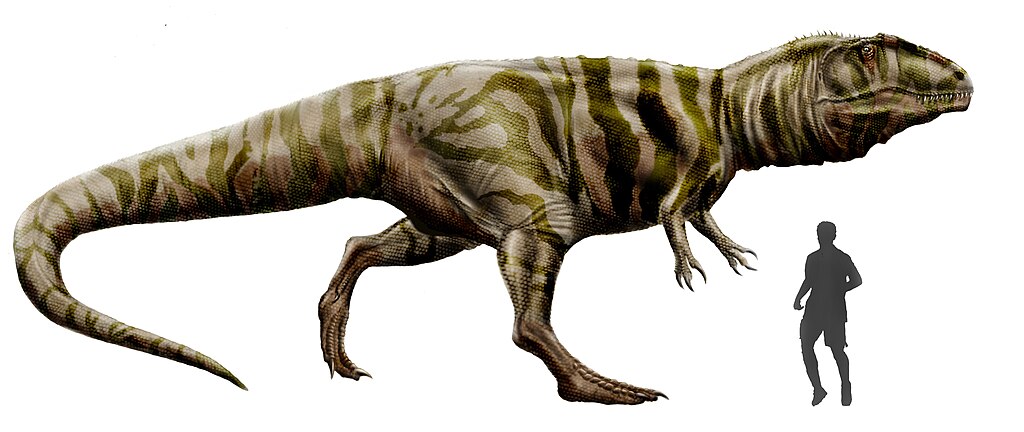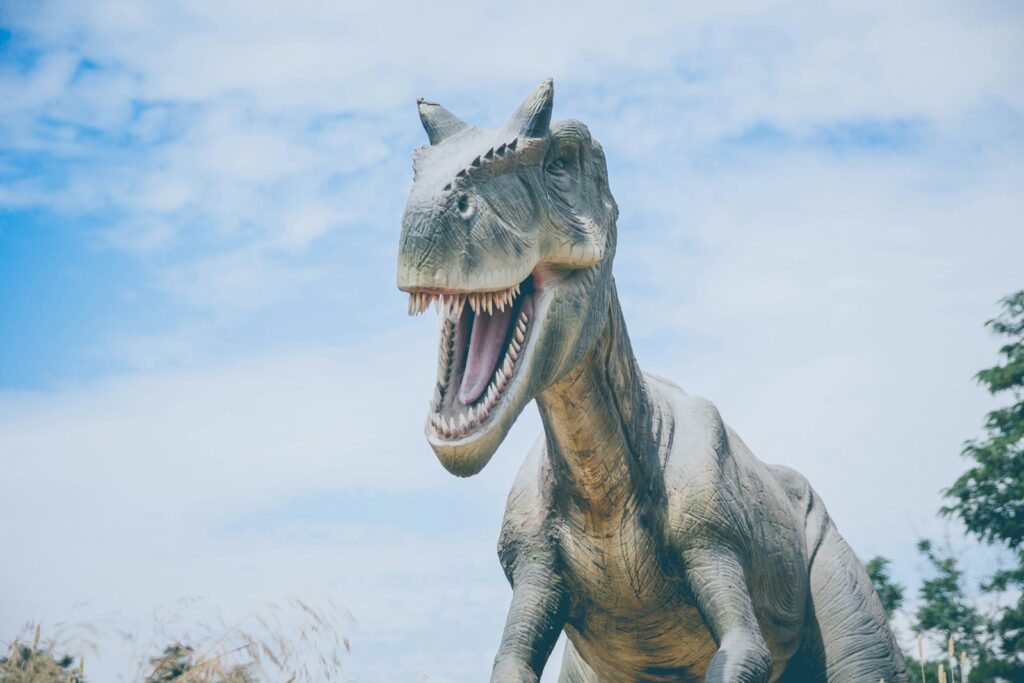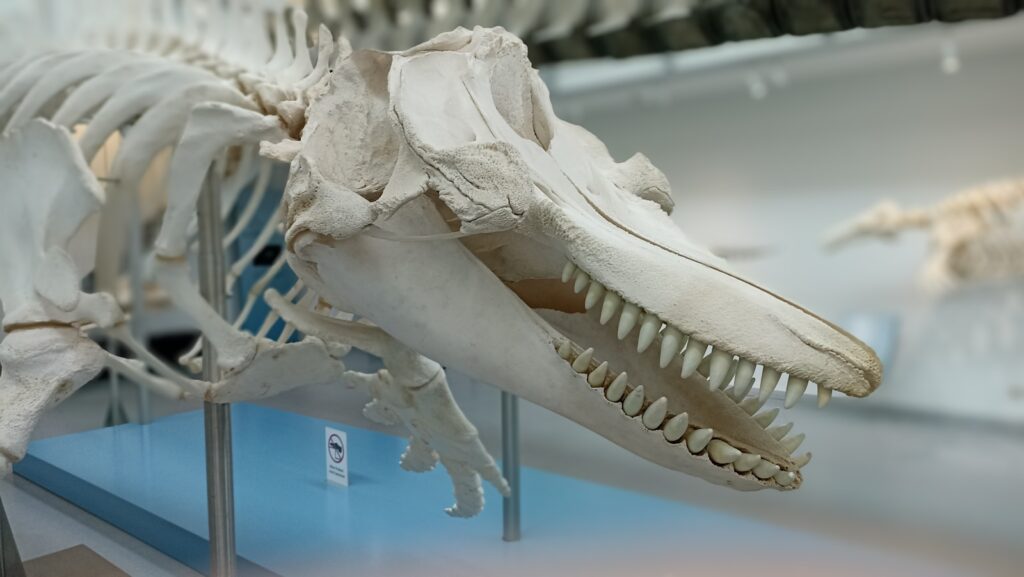The prehistoric world was home to some of nature’s most fascinating predators, with raptor dinosaurs standing out as particularly remarkable for their hunting prowess and cognitive abilities. These feathered theropods have captured the public imagination through scientific discoveries and popular media portrayals, particularly in films like Jurassic Park.
While measuring the intelligence of creatures that went extinct 66 million years ago presents significant challenges, paleontologists have developed methods to estimate cognitive capacity through brain-to-body size ratios, behavioral evidence, and comparative anatomy. This exploration into raptor intelligence reveals surprising insights about these ancient predators and which among them might have been the most cognitively advanced.
Defining Intelligence in Extinct Animals

Determining intelligence in animals that disappeared millions of years ago presents unique scientific challenges. Unlike with living species, researchers cannot conduct behavioral tests or observe problem-solving abilities directly. Instead, paleontologists rely on several indirect methods to estimate cognitive capacity. Brain endocasts—impressions of brain cavities in fossilized skulls—provide valuable information about brain size and structure.
The encephalization quotient (EQ), which compares brain size relative to body mass, offers another metric for approximating intelligence. Additionally, scientists examine ecological niches, social structures evident from fossil groupings, and anatomical features like enlarged cerebral hemispheres. While these methods provide educated estimates rather than definitive measurements, they allow researchers to make reasonable comparisons between different raptor species and their potential cognitive abilities.
The Dromaeosaurid Family: Nature’s Clever Predators

Dromaeosaurids, commonly known as “raptors,” represent a family of feathered, sickle-clawed theropod dinosaurs that exhibited remarkable predatory adaptations. These dinosaurs emerged during the mid-Jurassic period and flourished throughout the Cretaceous until the mass extinction event 66 million years ago. What makes dromaeosaurids particularly interesting from an intelligence perspective is their relatively large brain size compared to body mass.
Even compared to other theropods, dromaeosaurids possessed expanded cerebral hemispheres and well-developed sensory processing regions. Their brain structure shared more similarities with modern birds than with reptiles, suggesting enhanced cognitive abilities. Many species displayed physical characteristics associated with complex behaviors, including grasping hands, stereoscopic vision, and sophisticated inner ear structures that facilitated precise balance and coordination—all hallmarks of predators requiring advanced processing capabilities.
Troodon: The Traditional Intelligence Champion

For decades, Troodon formosus (now reclassified into several genera, including Stenonychosaurus) was considered the intellectual heavyweight among dinosaurs. Though technically belonging to the troodontid family—closely related to but distinct from dromaeosaurids—Troodon merits discussion in any conversation about intelligent raptors. This relatively small dinosaur, measuring about 7-8 feet long and weighing approximately 110 pounds, possessed the highest encephalization quotient of any known dinosaur.
Scientific analyses suggest Troodon’s brain-to-body ratio approached that of modern birds, with an EQ estimated between 5.8 and 8.0—remarkably high for a Mesozoic creature. Its brain case revealed enlarged cerebral hemispheres, expanded optic lobes, and a well-developed cerebellum, suggesting enhanced sensory processing, visual capabilities, and motor coordination. These neurological features, combined with its stereoscopic vision, grasping hands, and likely nocturnal hunting behavior, paint Troodon as a cognitively sophisticated predator capable of complex behaviors.
Velociraptor: Small But Cerebrally Mighty

Velociraptor mongoliensis has become the poster child for intelligent dinosaur predators, though much of its popular image comes from fictionalized portrayals rather than strict paleontological evidence. In reality, the Velociraptor was considerably smaller than its movie counterpart, standing roughly 1.6 feet tall at the hip and measuring about 6.8 feet in length.
Despite its modest size, the Velociraptor possessed impressive cognitive hardware. Brain endocasts reveal it had an estimated encephalization quotient of approximately 5.5—significantly higher than most other dinosaurs and even some modern reptiles. Its brain structure featured enlarged cerebral hemispheres and optic lobes, indicating advanced sensory processing.
Particularly notable was the Velociraptor’s expanded cerebellum, suggesting exceptional coordination and perhaps the capacity for complex hunting strategies. Fossil evidence from Mongolia’s Gobi Desert, including specimens that appear to have been hunting in packs, further supports the hypothesis that Velociraptors engaged in sophisticated social behaviors requiring higher cognitive functions.
Deinonychus: The Cooperative Hunter

Deinonychus antirrhopus represents one of the most compelling cases for advanced intelligence among dromaeosaurids. This mid-sized raptor, reaching lengths of about 11 feet and standing roughly 3.3 feet tall at the hip, has yielded fossil evidence strongly suggesting pack-hunting behavior. Multiple Deinonychus specimens have been discovered in association with the remains of Tenontosaurus, a much larger herbivorous dinosaur, indicating coordinated group predation tactics. Such behavior would require sophisticated social cooperation, communication, and possibly role specialization—all hallmarks of higher intelligence.
Neuroanatomical studies of Deinonychus brain cavities reveal an encephalization quotient estimated at approximately 5.0, placing it among the more cognitively endowed dinosaurs. Its brain structure featured expanded cerebral hemispheres, well-developed optic lobes, and a cerebellum that suggests impressive sensory integration and coordination. These neurological adaptations, combined with its nimble build and infamous sickle claws, made Deinonychus a formidable and likely quite intelligent predator.
Bambiraptor: Small Package, Big Brain

Among the most remarkably encephalized raptors was Bambiraptor feinbergi, a diminutive dromaeosaurid discovered in Montana dating to the Late Cretaceous period. Despite measuring only about 3 feet in length—roughly the size of a modern turkey—Bambiraptor possessed an extraordinarily high brain-to-body ratio. Paleontological analyses suggest it had an encephalization quotient potentially reaching 7.4-8.0, rivaling or even exceeding that of Troodon. This remarkable ratio places Bambiraptor’s relative brain size in the range of modern birds, specifically between ratites (like ostriches) and some avian predators.
The Florida Paleontological Society has noted that the Bambiraptor’s brain case shows an expanded cerebrum and well-developed optic lobes, suggesting enhanced processing capabilities and exceptional vision. Its forelimbs demonstrated remarkable dexterity, with seven degrees of freedom—comparable to the human arm—indicating potential for complex manipulation. These features collectively suggest Bambiraptor may have been among the most neurologically sophisticated dinosaurs of its era.
Achillobator: The Giant with Surprising Brainpower

Achillobator giganticus represents one of the largest dromaeosaurids ever discovered, with estimates placing it at approximately 20 feet in length and weighing around 500 pounds. Discovered in Mongolia and dating to the Late Cretaceous period about 90 million years ago, this massive raptor combined impressive size with unexpected neurological development.
Despite its large body mass, Achillobator maintained a relatively high encephalization quotient estimated at 4.8, suggesting it didn’t sacrifice cognitive capacity for physical size. Its brain endocast reveals expanded cerebral hemispheres and well-developed sensory processing regions, particularly those associated with vision and balance.
These neurological adaptations would have facilitated complex predatory behaviors despite its considerable bulk. Paleontologists speculate that Achillobator may have employed sophisticated hunting strategies to prey on the large herbivorous dinosaurs that shared its ecosystem, possibly combining the intelligent pack-hunting behaviors of smaller raptors with the advantages of its imposing physical presence.
Austroraptor: The Aquatic Intelligence

Austroraptor cabazai presents a fascinating example of specialized intelligence adapted to a semi-aquatic lifestyle. Discovered in Argentina and dating to the Late Cretaceous period approximately 70 million years ago, this unusual dromaeosaurid evolved distinctive features suggesting adaptation to waterside environments. Measuring approximately 16-17 feet in length, Austroraptor possessed an elongated snout with conical teeth suited for grasping slippery prey like fish.
What makes Austroraptor particularly intriguing from an intelligence perspective is how its cognitive adaptations may have specialized for its unique ecological niche. Brain endocasts reveal well-developed optic lobes and cerebellum, suggesting excellent visual processing and coordination—essential skills for hunting fast-moving aquatic prey.
While its encephalization quotient (estimated at 4.3) falls somewhat below the extraordinary values of Troodon or Bambiraptor, this figure remains impressive given its specialized lifestyle. Austroraptor demonstrates how raptor intelligence could adapt to diverse ecological challenges, suggesting cognitive flexibility across the dromaeosaurid family.
Microraptor: The Flying Genius

Microraptor gui represents one of the most remarkable dromaeosaurids due to its unique four-winged body plan and potential flight capabilities. This crow-sized dinosaur, measuring only about 2.5 feet in length, lived approximately 120 million years ago in what is now China.
Microraptor’s brain endocast reveals a remarkably high encephalization quotient estimated at 6.0-6.5, placing it among the most cognitively endowed dinosaurs relative to body size. Its brain architecture shows significantly expanded optic lobes and cerebellum, suggesting enhanced visual processing and exceptional coordination—capabilities essential for an animal navigating three-dimensional aerial space. The cerebral hemispheres also display substantial development, indicating advanced processing abilities.
The neurological demands of controlled gliding or limited powered flight would have required sophisticated spatial awareness, balance, and rapid sensory integration. These cognitive challenges likely drove the evolution of Microraptor’s impressive brain-to-body ratio, making it a strong contender for one of the most neurologically advanced dromaeosaurids despite its diminutive size.
Brain Structure Comparisons Across Raptor Species

Comparative analyses of raptor brain endocasts reveal fascinating patterns in cognitive specialization across different species. The cerebrum, responsible for higher cognitive functions, shows significant enlargement in most dromaeosaurids compared to other dinosaur groups, with Troodontids and smaller dromaeosaurids like Bambiraptor demonstrating the most pronounced development.
Optic lobes display remarkable expansion in visually-oriented hunters such as Velociraptor and Microraptor, suggesting enhanced visual processing capabilities critical for tracking prey. The cerebellum, which coordinates movement and balance, shows particular development in agile, fast-moving species like Deinonychus and Microraptor. Olfactory bulbs vary considerably, with some species like Velociraptor showing moderate development, while others demonstrate less emphasis on smell as a primary sense.
The overall brain architecture of most dromaeosaurids shares more similarities with modern birds than with reptiles, featuring an enlarged, avian-like brain folded to fit the skull cavity rather than the linear arrangement seen in reptiles—suggesting cognitive capabilities more advanced than their prehistoric contemporaries.
Evidence of Social Behavior and Pack Hunting

Some of the strongest indirect evidence for advanced intelligence among dromaeosaurids comes from fossil discoveries suggesting sophisticated social behaviors. The most compelling example involves Deinonychus, where multiple specimens have been found in association with the remains of larger herbivores like Tenontosaurus, strongly indicating coordinated group-hunting behavior.
Similar evidence exists for Velociraptor, with the famous “fighting dinosaurs” fossil showing a Velociraptor locked in combat with a Protoceratops, possibly representing an individual from a larger hunting party. In 2007, paleontologists in China discovered multiple Sinornithosaurus specimens preserved together, suggesting they lived and possibly hunted in groups. Such social hunting behaviors would have required advanced communication, role coordination, and possibly even teaching behaviors between generations.
The ability to cooperate with conspecifics, anticipate the actions of both pack members and prey, and adjust strategies accordingly represents a sophisticated cognitive skill set. While not definitive proof of superior intelligence, these apparent social structures align with behaviors observed in modern animals possessing higher cognitive functions.
The Intelligence-Body Size Paradox

An intriguing pattern emerges when examining intelligence across the dromaeosaurid family: the most cognitively advanced species were often among the smallest. This phenomenon, sometimes called the “intelligence-body size paradox,” appears consistently when comparing encephalization quotients. Diminutive species like Bambiraptor and Microraptor possessed some of the highest brain-to-body ratios, while larger dromaeosaurids like Achillobator and Utahraptor, though still impressively encephalized, showed somewhat lower values.
Several hypotheses may explain this pattern. Smaller bodies require less energy to maintain, potentially allowing more resources to be directed toward energetically expensive brain tissue. Smaller raptors may have faced more intense predation pressure, necessitating enhanced cognitive abilities for survival.
Additionally, the metabolic constraints of maintaining a large body while simultaneously supporting energetically demanding neural tissue may have created evolutionary trade-offs. This pattern mirrors what we observe in modern birds, where smaller species like corvids (crows and ravens) frequently demonstrate remarkable problem-solving abilities relative to their larger avian relatives.
The Verdict: Which Raptor Was Most Intelligent?

Based on current paleontological evidence, the title of “most intelligent raptor” likely belongs to either Troodon (though technically a troodontid) or Bambiraptor, with Microraptor as a close contender. Troodon has long been recognized for its remarkable encephalization quotient of approximately 5.8-8.0, the highest known among non-avian dinosaurs. Bambiraptor rivals this impressive figure with an estimated EQ of 7.4-8.0, while featuring highly developed cerebral hemispheres.
Microraptor, with its aerial lifestyle requiring sophisticated spatial processing, demonstrates an EQ of approximately 6.0-6.5 and specialized brain architecture. If we consider only true dromaeosaurids (excluding Troodon), Bambiraptor emerges as the likely intelligence champion based on current evidence. However, this ranking comes with important caveats: brain size alone doesn’t determine intelligence, and the fossil record remains incomplete.
Many raptor species await discovery, and our understanding of neural architecture continues to evolve. What’s clear is that several raptor species possessed cognitive capabilities far surpassing other dinosaur groups, approaching or perhaps even matching the intelligence of some modern birds.
Intelligence Legacy: From Raptors to Ravens

The remarkable cognitive capabilities of dromaeosaurids and their close relatives represent a critical chapter in the evolutionary history of intelligence on Earth. These dinosaurs didn’t merely possess enlarged brains as an evolutionary curiosity—they established the neurological foundation that would eventually give rise to the extraordinary intelligence seen in modern corvids, parrots, and other avian species.
Modern birds descend directly from small, specialized theropod dinosaurs closely related to dromaeosaurids, inheriting and further developing their expanded cerebral hemispheres and complex neural architecture. The problem-solving abilities of crows, the tool use of New Caledonian ravens, and the linguistic capabilities of parrots all have their evolutionary origins in the enlarged brains and complex behaviors of these prehistoric predators.
This evolutionary continuity challenges outdated notions of dinosaurs as dim-witted creatures, revealing instead that some dinosaur lineages were pioneers of advanced cognition. The intelligence exhibited by raptors represents not an evolutionary dead end but rather the beginning of a cognitive journey that continues in the remarkable intelligence of their avian descendants today.
Conclusion

The quest to identify the most intelligent raptor dinosaur reveals a fascinating picture of cognitive evolution. While Bambiraptor and Troodon appear to lead based on encephalization quotients and brain structure, various raptor species displayed specialized intelligences adapted to their particular ecological niches. From the aerial processing abilities of Microraptor to the social hunting behaviors of Deinonychus, these dinosaurs demonstrated remarkable cognitive flexibility.
Rather than viewing intelligence as a simple linear ranking, we might better appreciate how different raptors evolved specialized cognitive tools for their unique challenges. What remains clear is that these prehistoric predators possessed neural hardware far more sophisticated.




